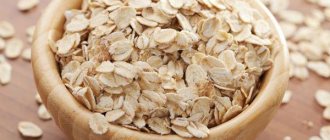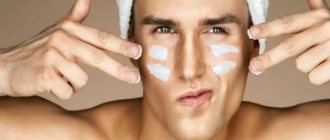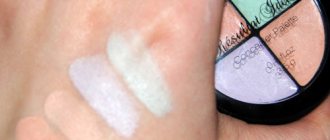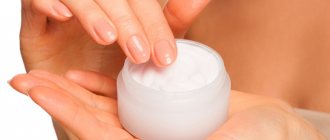When you choose makeup products, first of all you need to find out what type of skin you have: normal, oily, dry or combination, or maybe even sensitive. You should also find out exactly what color your skin is, because you have to choose a foundation that will fit perfectly on it and adapt to the color of your face.
It is also necessary to wisely choose decorative cosmetics: highlighter, blush, eye shadow, eyeliner, lipstick, shadow or eyebrow pencil, but it is worth remembering that you should not always focus on well-known brands or luxury cosmetics, since they may simply not suit you.
How to approach the choice of makeup cosmetics
Determine your skin tone
Stand in front of a mirror and hold up a piece of white paper next to your face. Then compare your skin color to the white paper.
- If your skin looks more yellow than paper, you'll probably have a warm undertone.
- If it looks pinker than the paper, you probably have a cool undertone.
- If the tone looks peachy rather than yellow or pink, then you're probably a neutral undertone.
Then you can choose your foundation for your makeup. For normal skin, any foundation for normal skin type will work well. Oily skin usually works best with a matte finish. Dry skin can benefit from moisturizing foundations. Liquid, cream or mousse foundations are suitable for combination skin. In any cosmetics store you can use testers and samples of certain foundations.
How to choose eyeliner.
There are several types of eyeliner that you can choose from. For example, pencils are easy to use and pair well with eye shadow. If you want to highlight your eyes more clearly and boldly (and you have a steady hand), liquid eyeliner may be the perfect choice.
Choose your own eye shadow.
Shadows can be chosen according to your eye color or skin tone.
- Brown eyes pair well with purples and metallic colors such as copper, silver and gold. Dark pink, yellow and green shadows are also suitable for brown eyes, but not dark blue.
- For blue eyes, try cool colors, dark browns or oranges.
- For green eyes, you can use gray smokey and charcoal, plum, violet or beige shadows.
- When it comes to pale skin, it's best to avoid darker and smokier colors. Use light earth tones.
- Bright eyeshadow colors work best with darker tones, but be sure to avoid ashy or white shades.
Choose your best blush.
Pale skin goes well with light pink and peach shades. Neutral skin tones suggest using pink and darker peach tones. For dark tones, tints and deep cream shades are excellent choices.
Getting your lips in order
Some makeup artists advise that when choosing the color of lipstick or gloss, choose darker tones than the color of your lips.
If you're into classic red lipstick, remember that cherry red lipsticks are best for skin with pink undertones; For skin with olive undertones, fiery red colors are best; for darker skin tones, dark reds or marsala are a good option.
- Pale skin is combined with apricot, pink and cream colors;
- For neutral skin tones, it is better to choose bright red or cherry shades;
- Dark skin can be emphasized by using dark brown, deep or bright purple colors.
How to choose a highlighter
- Use a highlighter with a white glow on fair skin. Highlighters that have cool white, champagne or ivory shades look chic on fair skin. They will make your skin glow and look brighter. If you don't want to look too pale, apply light pink blush to your cheeks first and then apply highlighter.
- Use a peach highlighter for neutral skin tones with cool undertones. Peach in the highlighter will complement the coolness of the undertone and make it warm with a slight pink tint.
- Choose a gold highlighter for neutral skin tones with warm undertones. Skin of this color is well suited to summer tanning. Therefore, using a golden-colored highlighter will make you look beautiful and tanned.
- Be sure to use rose gold or bronze highlighters for dark skin. Make sure your highlighter is well pigmented. Stay away from opalescent iridescent shades - instead of making your skin look hydrated and fresh, it will make your skin look gray.
Now we can safely say that you are more armed than ever and are ready to choose the right makeup cosmetics that are right for you. As you have already understood, the main thing is to understand your skin type, as well as its color, and also be able to combine colors so as not to look funny and inappropriate. It should be remembered that when choosing cosmetics, you should not blindly buy any fashion brands presented for the mass market (although they are also sometimes of quite high quality). Use only proven products, but first of all, it is best to consult with a makeup artist or cosmetologist who will help you accurately choose both decorative and skincare cosmetics.
What is decorative cosmetics
Decorative cosmetics is a tool with which you can create a daytime or evening look, improve it, highlight your advantages and disguise flaws in your appearance. Decorative cosmetics is a set of special products used to create makeup. These include:
- Tonal products.
They hide redness and pigmentation on the skin, protect against dust, ultraviolet rays, and also fix makeup. To achieve a good result, when choosing, you must take into account the color and texture of the skin.
- Proofreaders.
With the help of dark and light accents of the corrective product, you can change the sculpture of the face, hiding imperfections.
- Blush.
They can give a fresh glow and highlight the cheekbones.
- Lip products.
They allow you to focus attention on your lips and adjust their shape.
- Decorative products for eyes and eyebrows.
They will help to visually enlarge your eyes and add expressiveness to them.
You can emphasize the effect of decorative cosmetics with the help of additional products - highlighters, primers, illuminizers, shimmers and other products for the perfect make-up.
Photo: pixabay.com: UGC
There are also several secrets that will help make your makeup look sophisticated and more lasting:
- Before applying foundation, be sure to degrease your skin using toner and alcohol-free lotion.
- The tone must be applied strictly along the massage lines. This way you can avoid many wrinkles and make your face more toned.
- Before applying bright lipstick, put a little foundation on your lips - then the color will look rich and rich.
- Powdering your eyelashes before applying mascara will make them longer and fuller.
- Never apply large amounts of makeup to your face. Even if you want to hide age spots or dark circles under the eyes, a thick layer of concealer or toning products will have the opposite effect and you will get the effect of a mask.
For several years, representatives of the beauty industry have been actively increasing production volumes of natural cosmetics. Natural decorative cosmetics help to take care not only of human health, but also of the environment as a whole.
When purchasing decorative cosmetics, the first thing you need to pay attention to is the tightness of the packaging and the date of manufacture of the product.
Rules for storing decorative cosmetics at home.
- Any cosmetics, except cleansers, should not be stored in the bathroom. Unstable air temperature and high humidity can change the composition and consistency of the product and shorten the shelf life. Also, the heat of an electric lamp in the bathroom can heat up bottles and jars and thereby render the product unusable.
- Periodically review the expiration dates of your cosmetics. If you once purchased an expensive product from a luxury brand, this does not mean that it will be stored in your cosmetic bag forever. Do not experiment with expired products - they can cause great harm to the skin.
- Select a shelf for cosmetics in a dark place with a temperature of 12 to 20 degrees. This is an ideal place to store cosmetics.
- After using a cosmetic product, be sure to close the jar and cap tightly. Otherwise, dust and bacteria get into them, after which the product ceases to be suitable.
By following these simple rules, you will keep your favorite cosmetics longer.
Photo: pixabay.com: UGC
Problem skin
Those with problematic skin are familiar firsthand with such things as dryness, oily shine, acne, peeling, comedones, post-acne, and excessive skin sensitivity. How they differ from each other and how to deal with them is worth talking about in more detail.
Post-acne
Sometimes such an annoying pimple has disappeared long ago, but has left a mark for years. This phenomenon is called post-acne, it occurs quite often and has various manifestations:
- stagnant spots;
- scarring;
- dilation of capillaries and persistent erythema;
- enlarged pores;
- depigmentation or hyperpigmentation.
You can start with the red stagnant spots left behind by the pimple. Most often they occur due to mechanical impact on the pimple. People often reach for their itchy pimples, trying to squeeze them out and get rid of them quickly. This behavior is quite natural - if a noticeable reddish itchy bump appears on the skin, and even with a white head, then few people have the patience to wait for it to go away on its own, so they try to get rid of it using the “force pressure” method. After all, it seems that you just have to squeeze out the pus from the white head, and the problem will be immediately solved. That would be fine, but people often start squeezing out pimples without washing their hands first.
But it's not that simple. Any pimple is actually an inflammation. In addition to sebum, the contents of its head contain bacteria in large quantities. Accordingly, leukocytes begin to accumulate around the comedone, localizing the source of inflammation.
What happens if a pimple is squeezed out mechanically? If you wash your hands, then carefully squeeze out the pimple with them, cauterize the wound, it will heal, and after some time the scar will disappear without a trace. But the worst-case scenario may not be so favorable. Many pores clogged with sebum have several sinuses. When a pimple is squeezed out, there may be the following options:
- The pimple does not break out, as they want from it, but deep into the dermis, bringing there all the bacteria accumulated in its contents. In this case, the inflammation goes deep into the skin and can become chronic, leaving a mark on the surface in the form of a stagnant spot.
- The pimple may not be completely crushed, then inflammation will arise in the same place again and also become chronic. And putting pressure on re-inflammation is an even worse idea.
How to remove stubborn acne spots?
It is necessary to solve such a problem comprehensively, by influencing one of the most common causes of acne on oily and combination skin - an imbalance of the skin microbiota, expressed in the spontaneous proliferation of propionic bacteria. These bacteria thrive especially in the alkaline environment of oily skin, sebum, and lack of oxygen due to clogged pores. Therefore, any comprehensive care for problem skin should include proper cleansing. It must solve two important tasks: thoroughly and deeply cleanse the skin and not overdry it.
It should be noted right away that for oily and problem skin, it is not foams and gels that are better suited, but emulsion products (cream wash, cream, milk).
Milk Sativa No. 52
cleanses the skin gently, without leaving a feeling of tightness or drying it out. If you use it constantly, the blackheads will gradually disappear. It washes off easily, without leaving the feeling of a greasy film, and removes fragile makeup well.
Adjusting skin acidity
Since stagnant spots are most often inflammation that has become chronic, they are not so easy to deal with. This is where Sativa #57
, which contains large amounts of red onion extract. This extract not only has strong antioxidant properties, but also equally powerful antimicrobial and anti-inflammatory properties. It promotes the resorption of blood clots, quickly relieves inflammation, and prevents the formation of scars. It is actively used to eliminate acne.
To get rid of post-acne, you should treat your skin with toner as often as possible - up to 10 times a day.
Which cream is suitable for post-acne?
It is best, without waiting for the applied tonic to dry, to immediately apply a serum or cream with a strong anti-inflammatory effect on top of it. These include Sativa No. 25, 72 and 88.
Sativa №88
Sativa No. 88 is an excellent remedy for eliminating post-acne. It contains a whole complex of anti-inflammatory agents: encapsulated hyaluronic acid, extracts of hairy string, maquea, sage shoots, honeysuckle. Under the influence of the serum, the number of chronic micro-inflammations of the skin decreases, due to which it produces fewer inflammatory mediators. It is recommended for use in cases of rosacea, large post-acne rashes or background redness of the face.
Sativa №25
Cream Sativa No. 25 for normal, dry and combination skin is suitable for the fair sex of all ages - from girls to grandmothers, with the exception of those with young oily skin. The cream nourishes and heals the skin while the woman sleeps. Its formula is such that it helps prevent the appearance of wrinkles on young skin, and minimizes age-related changes in mature skin. It delicately supports the natural processes of elastin and collagen synthesis in skin cells.
It contains valuable but unstable oils that are decomposed by ultraviolet radiation, so they are not added to day creams. Sea buckthorn oil relieves micro-inflammation and treats micro-damage to the skin; it has a powerful antioxidant effect that binds free radicals that form in the skin after walking in the sun, in the cold, in the wind, or precipitated from the atmosphere of city streets. Evening primrose and black currant seed oils are rich in unsaturated fatty acids, which are valuable building materials for skin cells; they help maintain skin elasticity and softness.
Sativa №72
Sativa No. 72 is a light hyaluronic serum that helps maintain the correct pH of the skin and normalizes the balance of skin microbiota. It prevents the skin from losing moisture and provides it with antioxidant protection, which will not only bind free radicals, but also have an anti-inflammatory effect.
Now you should return to a comprehensive solution to the problem of post-acne, understanding that the effect will have to wait.
Comedones
Why do comedones appear?
First, you should understand the reasons for the increased activity of the sebaceous glands, since the appearance of comedones is necessarily associated with the accumulation of excess sebum in the sebaceous ducts as a result of:
- Reactivity of the sebaceous gland, that is, its increased sensitivity to hormones (stress, sex, etc.), as well as to other external irritants (foods, odors, cosmetic ingredients, etc.). All this, in contact with the body, provokes activation of the sebaceous glands. This is not yet a real allergic reaction of the skin, but the first manifestation of its “dissatisfaction” with contact with a certain substance. In this case, it would be advisable to understand what the sebaceous glands did not like so that, if possible, this factor could be eliminated or minimized.
- Naturally oily skin has more large, branched sebaceous glands. People with naturally oily skin have both regular sebaceous glands and branched (multilobed) ones, especially on the nose. In this case, they cannot avoid problems with clogging enlarged pores.
- City smog, ultraviolet radiation and other factors that can oxidize fats on the surface of the skin.
- Nutrition, more precisely, a passion for easily digestible carbohydrates and neglect of essential fatty acids. A deficiency of the latter causes hyperkeratosis of the sebaceous gland, in which the scales that appear in the sebum duct are poorly exfoliated and become an obstacle to the free release of sebum. Genetics and nutrition are different for all people, which means the quantity and quality of fatty acids produced by their bodies also differ. Therefore, the same cream causes comedones in some women, but not in others.
When choosing a cream, you need to pay more attention not to how well it removes comedones, according to advertising, but to the composition of its oils in terms of the content of fatty acids. Those with oily or combination skin simply need essential fatty acids, since their body produces the rest of the fatty acids in excess. Therefore, they will not benefit from cosmetics containing simple, stable oils with a high content of partially or fully saturated fats.
How to get rid of inflammation?
, cream for young skin Sativa No. 23 is excellent
, which is a light composition with a herbaceous spring scent and has universal properties. It is able to nourish, moisturize and soften the skin, and in addition, protect it from urban smog with antioxidants and reduce inflammation on the face.
This cream contains an excellent combination of oils:
- Rice bran oil, which is a source of nutrients and powerful antioxidants for tired skin;
- grape seed oil, which is also a strong antioxidant, regulates sebum secretion, strengthens capillaries, tightens pores;
- black cumin oil, which has pronounced antiseptic and antibacterial properties, extinguishing various inflammations (many skin diseases were treated with it in ancient times);
- Babassu oil, which softens rough skin, gives it softness and velvety, restores the skin lipid barrier, reduces moisture loss by the skin and thereby moisturizes it;
- shea butter (shea butter), which has a strong moisturizing and softening effect, reduces inflammation, slows down skin aging;
- mango butter, which has a rich set of vitamins and is a powerful antioxidant.
Various extracts are also added to Sativa No. 23 cream: amaranth, lavender, pomegranate seeds, sage shoots, dandelion root, cucumber seeds, thyme, chamomile and birch bark extract containing betulin. Finally, hyaluronic acid and plant squalane further hydrate and soften the skin.
Dry skin
Dry skin type is the most difficult type. Such skin produces little sebum and does not nourish it enough. Dry type requires special moisturizing and nourishing care that will maintain its balance. Cosmetics for dry skin types should include:
- · hyaluronic acid moisturizes, soothes and restores the skin;
- · ceramides – this substance helps retain moisture in the skin, fight thinning and redness;
- · Coconut oil moisturizes, restores and prevents flaking, and also has an antibacterial effect. The oil is considered quite light and does not overload the skin;
- Argan oil contains many beneficial vitamins, acids and antioxidants. They maintain skin tone, give it strength and elasticity;
- · Lactic acid provides soft and gentle peeling, removing dead cells.
Combination skin
In combination skin, the sebaceous glands work at different levels with different intensities. Therefore, there are even more problems with it than with other types of skin, and it is important to correctly distinguish the problem that belongs to you:
Oily combination skin
- In the T-zone, by evening there is a distinct shine, while along the periphery of the face the dermis continues to remain normal - this is how combination skin with a tendency to oily behaves.
- In the summer she sweats a lot and the T-zone gets shiny very quickly. In autumn, the composition of the hydrolipid mantle changes, the amount of sweat decreases, and sebum becomes thicker. The skin looks even more oily.
Combination skin prone to dryness
- Throughout the day, the T-zone remains normal, but the skin on the periphery of the face begins to peel off, and a feeling of tightness arises - these are already signs of combination skin with a tendency to dryness.
- In some areas of the skin, there is insufficient functioning of the sebaceous glands. Due to a lack of natural fats, the scales of the stratum corneum begin to bristle, and the skin flakes and dries even more.
- The worst thing is when the sebaceous glands work intensively in one area, and weaker than normal in another. Then the T-zone may begin to shine by lunchtime, and the periphery of the face will dry out, flake and tighten. In such particularly advanced cases, you will have to select separate care for each area of the skin.
How to cleanse combination skin?
In milk Sativa No. 52
There are no surfactants, and it cleans thanks to the ability of its oils to mix with other fats and oils (decorative cosmetics, dirt, sebum). It is suitable for dry, sensitive and oily skin, does not injure or irritate it, does not inhibit skin microflora, removes blackheads, and does not leave an oily film. It is ideal for removing fragile makeup (blush, eye shadow, powder, unstable mascara) and morning cleansing.
Sativa No. 52 contains a balanced mineral complex (zinc, copper, magnesium), which restores the protective functions of the skin, neutralizes free radicals, improves metabolism and respiration of skin cells. Babassu oil enhances the skin's protective potential and prevents moisture loss. Grape seed oil, being a strong antioxidant, tightens pores and normalizes the functioning of the sebaceous glands.
Which cream or serum is suitable for combination skin?
In any case, you need to start by restoring the lipid barrier.
Sativa №88
better than other means, it promotes skin regeneration, eliminates foci of micro-inflammation caused by exposure to free radicals.
Sativa No. 25 and No. 26 are also suitable for night care
, and the oils containing essential fatty acids will serve as valuable building materials for strengthening the skin.
Sativa serums No. 82
and No. 89
are suitable for day care .
Read also the review of Sativa cosmetics. How to understand the variety of products?
Sensitive skin
Sometimes a woman does not take care of her skin, but it only becomes irritated, red and tingling. What to do if the skin reacts so sharply to seemingly standard procedures?
One of the most important signs of sensitive skin is increased permeability of its lipid barrier. If the barrier is reliable, then the skin is reliably protected from infections, allergens, external irritants, etc. But in some situations, the skin’s ability to withstand the effects of the external environment decreases, and then it is easier for irritating factors to penetrate into the thickness of the skin. The main task of the immune system is to protect the body's cells with all its might, so it immediately reacts to such a situation, which manifests itself in the form of an inflammatory reaction. Even the most unexpected factors in their simplicity can provoke it: some components in cosmetics, tap water, temperature changes, even touch.
Why does skin become sensitive?
Some people's skin is naturally more permeable than others, although people often make it that way. The reasons for increased skin sensitivity may be:
- Incorrect care. If you cleanse your skin too zealously with an abundance of surfactants and too often use products that contain substances that destroy the lipid barrier: alcohols, harsh emulsifiers, salicylic acid, etc.
- Peelings and scrubs. We're not talking about using scrubs 1-2 times a week, but about those manic ladies who seem to be trying to grind themselves into powder with daily exfoliation. If you abuse scrubs every day, and do peeling at home every week instead of undergoing the procedure in a dermatologist's office, then the stratum corneum of the skin will inevitably become thinner, and at the same time the lipid barrier will weaken, and its permeability will increase.
How to cleanse sensitive skin?
To cleanse sensitive skin, it is important to reduce the destructive effect of surfactants on the lipid barrier, for which you should switch to washing with Sativa No. 52 milk
. Milk is a liquid cream, an emulsion containing oils that are slowly absorbed into the skin. It contains no surfactants at all. The skin of the face best accepts the emulsion, which mixes with the impurities on it and is then easily washed off with water.
Here you do not need to wipe your face with a cotton pad soaked in milk; instead, you need to apply it to your face moistened with water, massage it and rinse. This type of washing is beneficial not only for sensitive and dry skin, but also for oily and combination skin. If oily skin is not degreased too diligently, its sebaceous glands will gradually calm down and stop producing sebum in massive doses.
If washing with milk causes psychological discomfort to someone, then in order to reduce the effects of surfactants, the cleanser must first be mixed with water and foamed in the palms, and then applied to a wet face. You can also use foaming cleansers, as long as they are not made with saponified oils.
Many products contain surfactants - micellar water, washing gels, hydrophilic oil. If you wash your face with them actively (hold on the skin for a long time and rub), then the surfactant molecules will capture not only cosmetics, dirt and surface fats, but also the barrier lipids necessary for the skin. The consequences of this will be sensitivity, dehydration, and tightness of the skin.
Which cream to choose for sensitive skin?
The skin needs to be “fed” with oils containing many essential fatty acids for the construction of the lipid barrier. Similar products include all serums and night creams from Sativa - No. 25, , , 88, 82 and 89.
Serum Sativa No. 88
Sativa Serum No. 88 is especially rich in omega-3 acids. But even when they intensely nourish the skin, it is impossible to saturate the entire body in this way. It is clear that no cream can replace vegetable oil or fatty fish in the diet.
Serums Sativa No. 82,
If you need to quickly restore the skin, or it is already in a deplorable state, then you will need strong products in the form of Sativa serums No. 82 and No. 89, which contain a complex of physiological lipids and ceramides. These serums significantly accelerate the restoration of the stratum corneum and reduce skin sensitivity. And since there are fats here that have already been partially transformed into phospholipids and ceramides, the skin will need less effort to synthesize only part of these substances.
How often can you use these serums? If you need to reduce skin sensitivity and restore the lipid barrier, then 2 times a day. When leaving after peeling - up to 4 times a day after the final procedure for a course of 2-3 weeks, and then reduce the frequency to 2 times a day. For ichthyosis, dermatitis, atopic dermatitis in remission and various psychosomatic dermatoses - 4 times a day to areas of peeling and redness.











